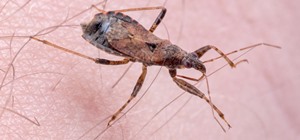Despite the availability of a vaccine against it, almost 50% of men aged 18-59 in the US are infected with the human papillomavirus (HPV). Why?
A new study published in JAMA Oncology by at a team of researchers at the Womack Army Medical Center (WAMC) in Fort Bragg discusses the high infection rates of adult men, after analyzing data from the National Health and Nutrition Examination Survey (NHANES).
Initiated in the 1960s, NHANES is a continuing series of surveys on health topics that combine physical examinations and interviews with participants. Each year, about 5,000 people are surveyed in counties across the country. The research team at WAMC looked looked at data gathered from 1,868 men during 2013-2014 to develop findings about the prevalence of male HPV infection rates in the US.
Researchers analyzed data after penile swabs were collected from study participants, refrigerated, and sent to the Centers for Disease Control and Prevention (CDC) for genotyping for the presence of high and low risk HPV types, including those in the current 9-valent HPV vaccine. The study found only 10.7% of the men in the study were vaccinated against HPV, and the overall infection rate for HPV in adult American males is 45.2%—almost half the population.
For a vaccine that can reduce infection and cancer rates in men and women, those numbers are discouragingly low.
What Is HPV?
According to the CDC, HPV is the most common sexually-transmitted disease in the United States. At one time or another, most sexually active people will become infected. HPV is not related to other STDs, like HIV (the virus that causes AIDS) or HSV (which causes herpes and genital sores).
Sometimes HPV causes no symptoms. Other times, it can lead to uncomfortable and disfiguring symptoms, and even cancers, including:
- Genital warts: Genital warts are small, flattish, or sometimes cauliflower-shaped warts on the cervix, vagina, penis, scrotum, anus, or elsewhere, that may appear long after infection with HPV.
- Cervical cancer: The HPV vaccine was originally delivered to women to protect against cervical cancer caused by infection with certain strains of HPV. Pap smears, which sample cells from the surface of the cervix, have significantly lowered the death rate by catching the infection before it turns into cancer. Cervical cancer was once the leading cause of death of women in this country.
- Anal and penile cancer: HPV infection can cause anal cancer in either gender, as well as penile cancer in men.
- Cancer or conditions of the mouth and throat: Recurrent respiratory papillomatosis (RRP) is an uncommon condition where wart lesions grow in the back of the throat. Oropharynx cancers are associated with HPV infection and also occur in the back of the throat.
Common and serious, there are more than 150 viruses in the HPV family. The HPV vaccination protects against strains most likely to cause cancer. Because the vaccine does not protect against all HPV viruses, Pap smears are an important lifetime screening tool for women.

A recent study in the journal Cancer, from researchers at Johns Hopkins and George Washington University, noted findings that the mortality rate for white women with cervical cancer is 4.7 per 100,000, whereas the mortality rate for black women is 10.1 per 100,000. The higher mortality figures may be due to disparities in provision of medical services, including poor screenings and followups available to lower income black women.
Other than the Pap smear, there is no other regular screening process for HPV-associated cancers in men or women.
HPV Is Common, So How Can You Avoid It?
HPV is spread through sexual contact. That usually means vaginal or anal sex. Oral HPV, which causes cancers of the throat and neck, can be transmitted through mouth-to-genital or mouth-to-anus sexual practices. There are insufficient studies to say whether or not the HPV virus is transmitted through "French kissing," aka deep kissing.
You can reduce your chances of being infected with HPV, or passing it on to others, in a couple of ways:
- Monogamy: Being in a committed sexual relationship with someone who is only having sex with you reduces your chance of infection. That said, either partner may have contracted HPV prior to the current relationship.
- Put up barriers: Use dental dams or latex condoms and be sure to use them the right way. Using a condom properly can also help you reduce risk of other STDs. Unfortunately, HPV can be transmitted during sex to areas around the genitals, which means that condoms reduce, but do not eliminate, your risk of giving or receiving an HPV infection.
- Vaccination: For young adults age 11 to 26, vaccination is the best current way to avoid some strains of HPV that can cause serious illness in yourself or others. In October 2016, the CDC recommended that children 11 through 15 need only two doses of the vaccine, while young adults age 15 through 26 still need three vaccinations to confer immunity.

The HPV vaccine has enormous value for children, young adults, and millennials looking at vaccination options for their children. In addition to the individual protection against cancers and associated conditions, a vaccinated community is circulating less contagion for all.
HPV has serious impacts for men and women. Consider the facts and consider the vaccine.
Just updated your iPhone? You'll find new emoji, enhanced security, podcast transcripts, Apple Cash virtual numbers, and other useful features. There are even new additions hidden within Safari. Find out what's new and changed on your iPhone with the iOS 17.4 update.



























Be the First to Comment
Share Your Thoughts